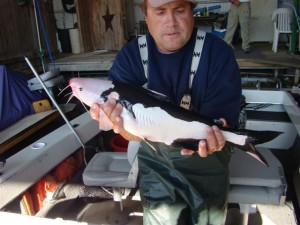It’s common knowledge that fisherman, especially freshwater fishermen tend to stretch the truth a bit. Those less educated in the ways of fishing might even call it a lie.
You know that right? Well apparently it’s so very well known that the IGFA has to resort to polygraph testing when certifying a fish as a record catch! Oh the IGFA is the “International Game Fish Association” which is tasked with the job of keeping records for fish caught. When a possible new world record fish is caught, they go about certifying the catch and making sure all appropriate rules were followed when the catch was made.
If you’ve been under a rock for the past few months, you probably didn’t hear that a potential world record largemouth bass was caught in Japan this past year. (I also wrote another post about it here: new-world-record-largemouth-bass.)
Anyway, back to the IGFA. It turns out that since it’s been 77 years that the world record largemouth was caught, they wanted to be very careful about certifying the latest record catch. Now the fish that was caught was only 2 ounces bigger than the previous world record, and as such, it does not qualify as a new world record … but it does qualify as a tie for the world record under IGFA rules. That is, once it gets certified.
Good news is that the catch a was certified. But you should read this article in the “Shreveport Times” to see what the fisherman went through to get it certified!
The guy had to take a polygraph for goodness sake! Now that’s taking your certification process VERY seriously!
So how about we all start a new trend and try telling the truth when it comes to our fish stories? That way, maybe we won’t need to take polygraph tests when we catch a new world record fish! Can we make it work? Or is it just too much to ask of us?
OK – OK. So we like exagerating a bit. Don’t ask too much of us!
Here’s to hoping you all catch the fish of your dreams this year!
Happy New Year and I’ll catch you later!

